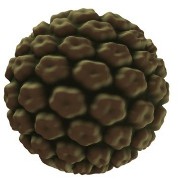 Photo: Getty Images
Photo: Getty Images
With HPV (human papillomavirus) being the number one sexually transmitted infection, there are good reasons to take advantage of ways in which you can reduce your risks.
The Center for Disease Control and Prevention (CDC) estimated that there are over 20 million Americans with HPV, and an additional 6.2 million cases diagnosed each year. Since this virus was first identified as being responsible for cervical cancer, numerous other cancers have now been identified as the result of HPV.
HPV can cause cervical, vulvar, and vaginal cancers in women, anal cancer in both women and men and penile cancer in men. It has recently been shown to cause head/neck cancers which typically manifest in the tonsils and the base of the tongue. These types of cancers are more typical in males than in females. While it is believed that oral HPV cancers are the result of oral sex, 40 percent of those in a recent John’s Hopkins study had never engaged in oral sex.
So what can you do to reduce your chances of contracting HPV and/or minimizing any potentially negative ramifications of the virus? While it only takes an encounter with one partner to contract HPV, studies have shown that the risks of HPV are greater when someone has a increased number of partners. Give careful consideration to whom you choose to be intimate with. Transmission occurs with intimate skin to skin contact and sexual intercourse in any form is not a prerequisite for acquiring HPV.
Studies have also shown that there is a direct link between smoking and an increased likelihood of persistent disease once HPV is contracted. Smoking is also known to effect the body in numerous ways including its effects on lowering the immune system. So, if you can, quit smoking. I know it’s difficult but consult your doctor for assistance if need be.
Using condoms can help to reduce but does not totally eliminate the possibility for contracting HPV. Since transmission occurs when one comes into contact with an infected area, and since a condom can only cover the penis it is still better than choosing to have unprotected sexual interactions.
Another risk factor for contracting HPV is beginning sexual interactions at an early age. This may be in part due to the fact that more partners may become a factor when beginning at an younger age. Either consider postponing any sexual encounters yourself, or if you are the parent of a young daughter in particular, talk to her about HPV. No parent ever wants to believe their daughter is having sexual relations as early as many of them are and waiting until she is 15 or 16 to speak with her about this issue may be too late.
One of the most important things that can be done to protect yourself or your child (male or female) against the two most aggressive forms of HPV and those which are responsible for the majority of precancerous and eventually cancerous lesions, is to get vaccinated against HPV. A side benefit to the vaccine is that it also protects against two low risk strains of HPV (types 6 and 11) which cause genital warts.
Talk to your doctor about HPV and ask about receiving the vaccine. While unfortunate, some physicians are not comfortable discussing these topics--unless it is a gynecologist but sometimes even then they find it difficult--and may worry about making the patient uncomfortable by initiating the discussion. The best advice is to advocate yourself.
http://www.cdc.gov/hpv/Prevention.html
http://www.thelancet.com/journals/laninf/article/PIIS1473-3099(06)70535-7/fulltext
http://www.webmd.com/sexual-conditions/hpv-genital-warts/hpv-virus-men?page=2
http://webcast.jhu.edu/mediasite/Viewer/?peid=47c876980359451391880c97716d5234
http://www.ncbi.nlm.nih.gov/pubmed/18609217
Reviewed on May 18, 2011
Edited by Alison Stanton
Bonnie Diraimondo is an RN and expert in HPV. She maintains her own website, thehpvsupportnetwork.org and advocates for education of both patients and physicians as well as for vaccination.






Add a CommentComments
There are no comments yet. Be the first one and get the conversation started!